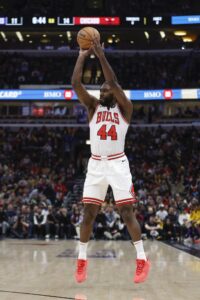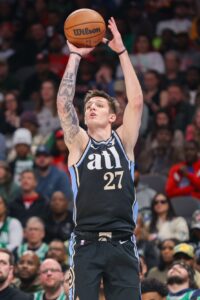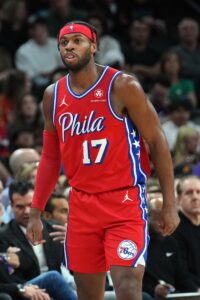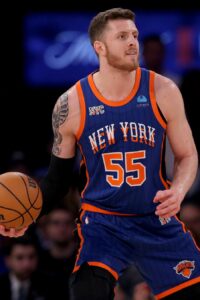A trade kicker is a contractual clause that pays an NBA player a bonus when he’s traded. They’re one of the tools teams have at their disposal to differentiate their free agent offers from the ones put on the table by competing clubs — or to incentivize a player to sign an extension before he reaches free agency.
Sometimes the kicker is worth a fixed amount, but usually it’s based on a percentage of the remaining value of the contract. So, a player who has a 10% trade kicker is eligible for a bonus worth 10% of the amount of money he has yet to collect on his deal (not counting an option year).
Regardless of whether a trade kicker is set at a fixed amount or a percentage, the bonus can’t exceed 15% of the remaining value of the contract. Most trade kickers are worth 15%, the highest percentage allowed.
A trade bonus must be paid by the team that trades the player, rather than the team acquiring him. The current Collective Bargaining Agreement also allows a player to waive part or all of his trade kicker as part of a deal, if he so chooses.
If you want a more detailed explanation of how trade kickers work, check out the Hoops Rumors Glossary entry on the subject.
Here’s a list of the NBA players who have active trade kickers for 2024/25, listed alphabetically, along with the details of those trade bonuses:
- Giannis Antetokounmpo, Bucks (15%)
- OG Anunoby, Knicks (15%)
- Desmond Bane, Grizzlies (15%)
- Nicolas Batum, Clippers (15%)
- Jalen Brunson, Knicks (15%)
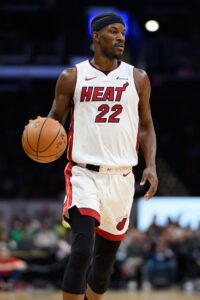
- Jimmy Butler, Heat (15%)
- Anthony Davis, Lakers (15%)
- Draymond Green, Warriors (15%)
- James Harden, Clippers (15%)
- Al Horford, Celtics (15% or $500K, whichever is lesser)
- Brandon Ingram, Pelicans (15%)
- Kyrie Irving, Mavericks (15%)
- LeBron James, Lakers (15%)
- Derrick Jones, Clippers (5%)
- Kyle Kuzma, Wizards (15%)
- Zach LaVine, Bulls (15%)
- Naji Marshall, Mavericks (5%)
- Caleb Martin, Sixers (15%)
- Kevin Porter Jr., Clippers (15%)
- Bobby Portis, Bucks (15%)
- Julius Randle, Knicks (15%): Traded
- Austin Reaves, Lakers (15%)
- Jayson Tatum, Celtics (15%)
- Klay Thompson, Mavericks (15%)
- Matisse Thybulle, Trail Blazers (15%)
- Derrick White, Celtics (15%)
The following players have trade bonuses on their contracts, but those bonuses would be voided if they were to be traded during the 2024/25 league year, since they’re already earning this season’s maximum salary:
- LaMelo Ball, Hornets (15%)
- Devin Booker, Suns (10%)
- Jaylen Brown, Celtics (7% or $7MM, whichever is lesser)
- Stephen Curry, Warriors (15%)
- Luka Doncic, Mavericks (15%)
- Anthony Edwards, Timberwolves (15%)
- Darius Garland, Cavaliers (15%)
- Paul George, Sixers (15%)
- Shai Gilgeous-Alexander, Thunder (15%)
- Tyrese Haliburton, Pacers (15%)
- Nikola Jokic, Nuggets (15%)
- Kawhi Leonard, Clippers (15%)
- Ja Morant, Grizzlies (15%)
- Karl-Anthony Towns, Timberwolves (10%): Traded
- Fred VanVleet, Rockets (15%)
- Trae Young, Hawks (15%)
The following players have signed contract extensions that will include trade kickers, but those extensions won’t go into effect until at least the 2025/26 season:
- Scottie Barnes, Raptors (15%)
- Rudy Gobert, Timberwolves (7.5%)
- Aaron Gordon, Nuggets (3%)
- Jalen Green, Rockets (10%)
- Evan Mobley, Cavaliers (15%)
- Ivica Zubac, Clippers (5%)
Information from ESPN’s Bobby Marks was used in the creation of this post.
